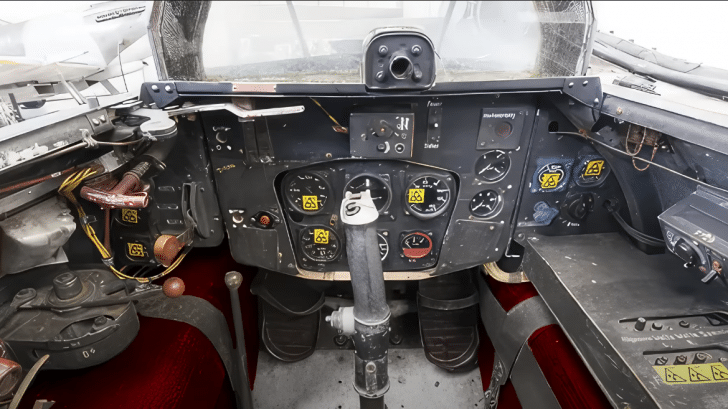During WWII, Germany was experimenting with different designs for unpowered aircraft such as gliders. By then, they’d already had experience with rocket engines, but they could only sustain flights for short periods before using up their fuel. So why not put a rocket engine in a glider?
Me 163 Komet
After numerous prototypes (and a handful of dead test pilots), the Messerschmitt Me 163 Komet was first deployed in 1944. It was only 18 ft in length and needed to be fitted with a dolly for takeoffs. Once airborne, the dolly would be jettisoned to reveal a single skid that acted as its landing gear.

However, the skid was held in place by an oleo-pneumatic strut that absorbs the shock in landings. If this were to malfunction, the pilot was in for a very rough landing. In fact, three of its main test pilots experienced this malfunction and were hospitalized with serious spinal damage and skull fractures.
Hard Landings
Furthermore, landing this aircraft – and even aiming it – was harder than it should be. The slightest updraft could potentially force the glider to rise up into the air and overshoot the runway. Meanwhile, the speeds it can reach meant that it could simply zip by a target in a matter of seconds, so hitting anything required excellent marksmanship and luck.
Pilots also needed to have special low-fiber diets as gas in the GI tract would rapidly expand during its extremely fast climbs, making it uncomfortable for the pilots. To make matters worse, the Komet was unpressurized, even though it could climb to 32,000 ft in less than 3 minutes.

Engaging The Komet
Questionable skids and flight characteristics aside, the Komet also had problems regarding its fuel. The Allies noticed that the Komet only held enough fuel for seven and a half minutes of powered flight, so they would delay engaging the Komet until its fuel emptied out.
Fuel Problems
But its biggest hazard was the type of fuel it used – the C-Stoff, a mixture of hydrazine hydrate and methanol, and T-Stoff, a made up of concentrated hydrogen peroxide. These would combust when they make contact with each other, so the Komet had separate fueling ports for each and two different tankers for refueling.
The fuel’s high volatility resulted in several fires and explosions, injuring and killing pilots and ground crew alike. These incidents often occurred when fuel lines were either ruptured or leaking, which could be amplified by the number of rough landings it would endure.

Corrosive and Deadly
1,040 L of C-Stoff was stored behind the cockpit’s rear wall and 120 L of T-Soff on both sides of the pilot inside the cockpit. These two were also corrosive by themselves.
T-Stoffs were only stored in aluminum, while the C-Stoff was kept in enamel or glass, as they’d eat away at anything else. Pilots also wore special rubberized asbestos suits to protect them from the corrosive fuel.


